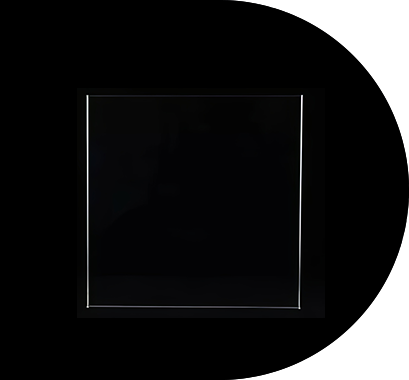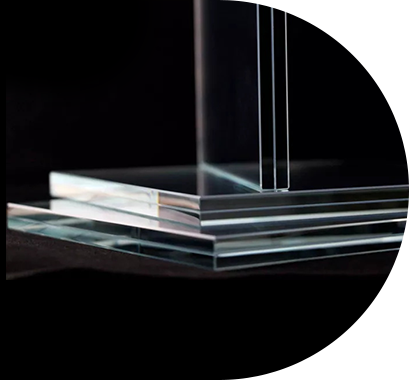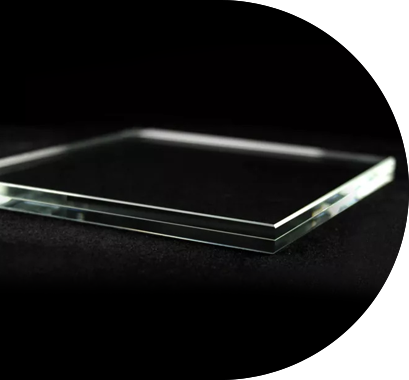Low reflective glass, often known as anti-reflective glass, is a specialized type of glass designed to reduce the amount of light reflection on its surface. This innovative glass technology is increasingly popular in various industries due to its unique properties, including enhanced clarity, improved aesthetics, and energy efficiency. Whether used in architectural designs, automotive windows, or high-tech devices, low reflective glass offers numerous benefits that make it a valuable material in today’s world.
Content
What is Low Reflective Glass?
Low reflective glass is engineered to minimize the reflection of light off its surface, allowing more light to pass through the glass. It is typically coated with a special layer or uses a specific manufacturing technique that reduces surface reflection to as low as 0.5%. In contrast to standard glass, which can have reflection levels of up to 8%, low reflective glass offers a clearer, more transparent view and a more aesthetically pleasing appearance.
The glass achieves this effect through a coating, typically made of thin layers of metal oxide, which minimizes the scattering of light. This coating not only improves visibility but also reduces glare and enhances the visual appeal of the glass.
Key Applications of Low Reflective Glass
-
Architectural Design and Facades
One of the most significant applications of low reflective glass is in modern architecture. Many high-rise buildings, commercial properties, and residential structures use this type of glass for their facades, windows, and skylights. The glass allows natural light to penetrate more efficiently, creating brighter, more energy-efficient interiors. Additionally, the reduced reflection enhances the visual aesthetics of a building’s exterior, providing a sleek, modern look without the glaring reflection often seen in traditional glass.-
Enhanced Aesthetics: Low reflective glass provides buildings with a more polished and sophisticated appearance by reducing the distracting glare seen on the exterior, allowing the architectural design to shine through.
-
Energy Efficiency: By allowing more natural light to enter a building, low reflective glass helps reduce reliance on artificial lighting, thereby contributing to energy savings.
-
-
Automotive Industry
In the automotive sector, low reflective glass is commonly used in car windows, windshields, and sunroofs. The reduced glare enhances the driver’s visibility, particularly during bright sunlight or at night when headlights can cause discomfort and distractions.-
Improved Visibility: Low reflective glass helps reduce glare from the sun, streetlights, and other vehicles' headlights, which improves driving safety, particularly at night or in bright conditions.
-
Passenger Comfort: With less glare, passengers enjoy a more comfortable ride, particularly on long trips where sunlight can be a nuisance.
-
-
Optical and Display Technology
Low reflective glass is a crucial component in the manufacturing of high-definition displays, such as those used in smartphones, televisions, monitors, and digital signage. It helps improve the clarity of images by reducing reflections and ensuring that the displayed content remains visible even in brightly lit environments.-
Display Clarity: In consumer electronics like smartphones, tablets, and televisions, the reduced reflection provides a sharper, more vibrant display. This is particularly important for devices used in outdoor or brightly lit environments.
-
Durability: Low reflective glass often comes with a scratch-resistant coating, adding to the longevity of displays and reducing the need for frequent replacements.
-
-
Museums, Galleries, and Exhibitions
Museums and art galleries frequently use low reflective glass in frames, displays, and showcases to protect valuable artwork and exhibits while minimizing the interference of light reflections. This allows visitors to view the artwork without distraction, preserving the integrity of the piece.-
Preservation of Art: Low reflective glass offers UV protection, safeguarding artworks from damage caused by sunlight and ensuring the preservation of valuable pieces.
-
Enhanced Viewing Experience: The glass’s minimal reflection ensures that viewers can appreciate artwork or exhibits in their true colors and details, providing an immersive experience without glare.
-
-
Photography and Film
Photographers and videographers often use low reflective glass in their equipment, such as lenses, camera filters, and display monitors. The reduced reflection allows for sharper and more accurate images, especially in environments with challenging lighting conditions.-
Improved Image Quality: By minimizing reflections, photographers can capture clearer, more vivid images with less distortion, leading to better-quality photos and videos.
-
Minimized Glare: Low reflective glass reduces the glare from overhead lights or sunlight, which is essential for maintaining color accuracy and contrast in images.
-
-
Retail and Commercial Displays
Retail stores and commercial establishments also use low reflective glass in their window displays and showcases. This type of glass ensures that the products inside are visible to customers without distractions caused by reflection, providing a clearer view of the merchandise.-
Enhanced Product Visibility: Low reflective glass improves the overall appearance of products displayed in windows by offering a clearer view and reducing unwanted reflections.
-
Attractive Storefronts: The glass enhances the visual appeal of a storefront, helping to attract potential customers by offering a sleek, modern aesthetic.
-

Benefits of Low Reflective Glass
-
Improved Visibility and Reduced Glare
The primary advantage of low reflective glass is its ability to reduce glare, which significantly improves visibility. Whether in architectural design, automobiles, or optical displays, less reflection leads to better clarity and a more pleasant viewing experience. This is particularly beneficial in environments with varying light conditions. -
Enhanced Aesthetic Appeal
Low reflective glass enhances the appearance of both buildings and products. Its ability to provide a clearer view without distractions from reflections gives a more sophisticated and modern look, making it a popular choice in luxury settings and high-end architectural designs. -
Energy Efficiency
By allowing more natural light to pass through, low reflective glass contributes to energy efficiency. Buildings and homes with this type of glass benefit from better daylighting, reducing the need for artificial lighting during the day. This can lead to lower energy consumption and cost savings. -
Durability and Protection
Many low reflective glass products come with added protective coatings that make them more resistant to scratches and UV radiation. This helps to preserve the glass’s appearance and functionality over time, ensuring that it continues to perform effectively and look pristine for years. -
Better Comfort
In vehicles and other environments, reduced glare from the sun or artificial lights enhances comfort by creating a more pleasant and less distracting environment. This is particularly important in long-term exposure situations, such as driving or spending time in brightly lit spaces. -
Eco-Friendly
By reducing the need for artificial lighting, low reflective glass can contribute to a more eco-friendly environment. It can also help reduce the amount of energy needed to cool a building, as better daylighting can moderate indoor temperatures.
Conclusion
Low reflective glass is a versatile material that offers a wide range of applications, from improving visibility and comfort in automotive design to enhancing the viewing experience in digital displays and art exhibitions. Its ability to reduce glare and improve clarity makes it an invaluable choice in various industries, from architecture to consumer electronics. With added benefits like energy efficiency, durability, and aesthetic appeal, low reflective glass is becoming a staple in modern design and technology, helping to create safer, more efficient, and visually pleasing environments. Whether in homes, vehicles, or professional displays, this innovative glass continues to provide both functional and aesthetic advantages, making it a preferred choice for many applications.






